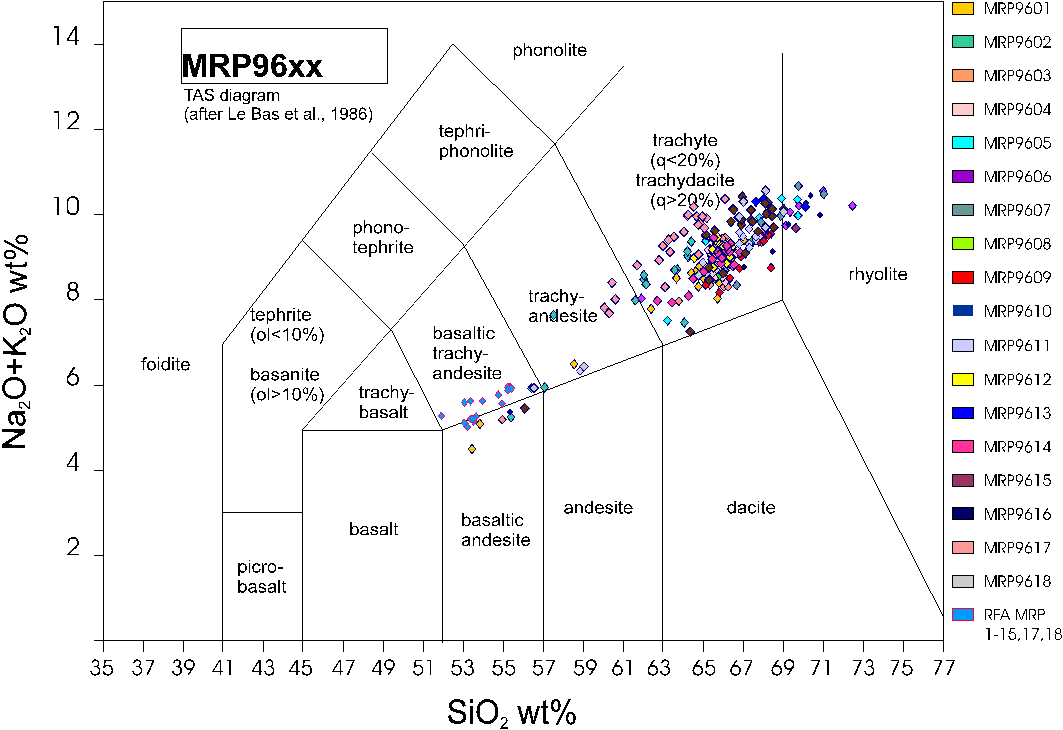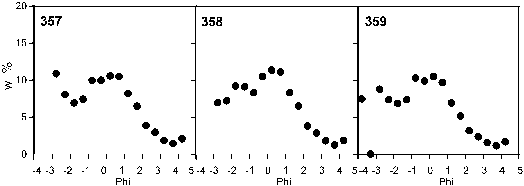

During a fieldtrip in central Java in November 1996, in collaboration with
the Volcanological Survey of Indonesia, samples were obtained from the
1994 pyroclastic flow of Merapi at Kali Boyong. The samples were selected
in order to obtain as wide a range of density (porosity) and crystal content
as possible for fragmentation experiments.The samples exhibit porosities
between 5 and 60 vol.% (2D image analysis measurements on thin sections).
Plagioclase und pyroxene phenocrysts make up 45 vol%. The crystal portion
is expressed as a fraction of the vesicle-free volume. 18 samples were
chosen for fragmentation-experiments. On these samples XRF and Electron
Microprobe analyses were performed and the results are presented in Fig.
3.7-5.
 |
|
Whole rock analyses from 17 samples show basaltic andesitic to basaltic
trachyandesitic compositions. Microlite-free groundmass analysed by Electron
Microprobe using a defocused beam reveals trachytic to rhyolitic glass
compositions indicating a high viscosity of the molten groundmass. The
range in wt% H2O determined by Karl-Fischer-Titration is 0.14-0.26
(±0.05). Optical characterisation reveals
a high degree of vesicle alignment with respect to phenocrysts. Fractures
will thus more likely follow the vesicle alignment mantling a phenocryst
than break the phenocryst. This is confirmed by observations of the surfaces
of experimentally-generated pyroclasts and by features of their particle-size-distribution
curves (Fig. 3.7-6).
 |
|
The distribution curves show a "second" peak at  ~ 0, in the size range of the large undisturbed
phenocrysts. First experiments on sample MRP9603 reveal a fragmentation
pressure limit Po of 45 bar at 18°C. Further investigation
will be concentrated on understanding the influence of microlites on the
fragmentation process.
~ 0, in the size range of the large undisturbed
phenocrysts. First experiments on sample MRP9603 reveal a fragmentation
pressure limit Po of 45 bar at 18°C. Further investigation
will be concentrated on understanding the influence of microlites on the
fragmentation process.

Tel: +49-(0) 921 55 3700 / 3766, Fax: +49-(0) 921 55 3769, E-mail: bayerisches.geoinstitut(at)uni-bayreuth.de
 Previous page
Previous page